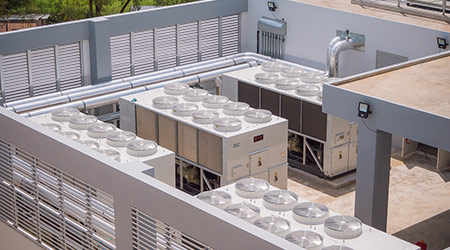Energy efficient HVAC systems require that a building’s envelope be designed to reduce overall demand on the system. Traditional building envelope analysis involves calculating the U-value of all the various components of the envelope to establish how much heat flows through each surface, according to an article from Building Operating Management on the FacilitiesNet website.
This analysis can focus on the most extreme temperatures the building will experience. However, buildings do not operate continuously in extreme conditions, which means that accurate optimization of the building envelope must consider all conditions that occur throughout the year.
The use of computer-aided energy modeling allows for detailed analysis. The process involves creating a 3D model of the entire building, which is then simulated with the building’s local weather conditions and the internal loads created by the people and equipment inside the building, for a year.
The results of this process deliver detailed information on both thermal conditions inside each space, as well as the energy consumption of all the building systems.

 Grounding Healthcare Spaces in Hospitality Principles
Grounding Healthcare Spaces in Hospitality Principles UC Davis Health Selects Rudolph and Sletten for Central Utility Plant Expansion
UC Davis Health Selects Rudolph and Sletten for Central Utility Plant Expansion Cape Cod Healthcare Opens Upper 2 Floors of Edwin Barbey Patient Care Pavilion
Cape Cod Healthcare Opens Upper 2 Floors of Edwin Barbey Patient Care Pavilion Building Sustainable Healthcare for an Aging Population
Building Sustainable Healthcare for an Aging Population Froedtert ThedaCare Announces Opening of ThedaCare Medical Center-Oshkosh
Froedtert ThedaCare Announces Opening of ThedaCare Medical Center-Oshkosh